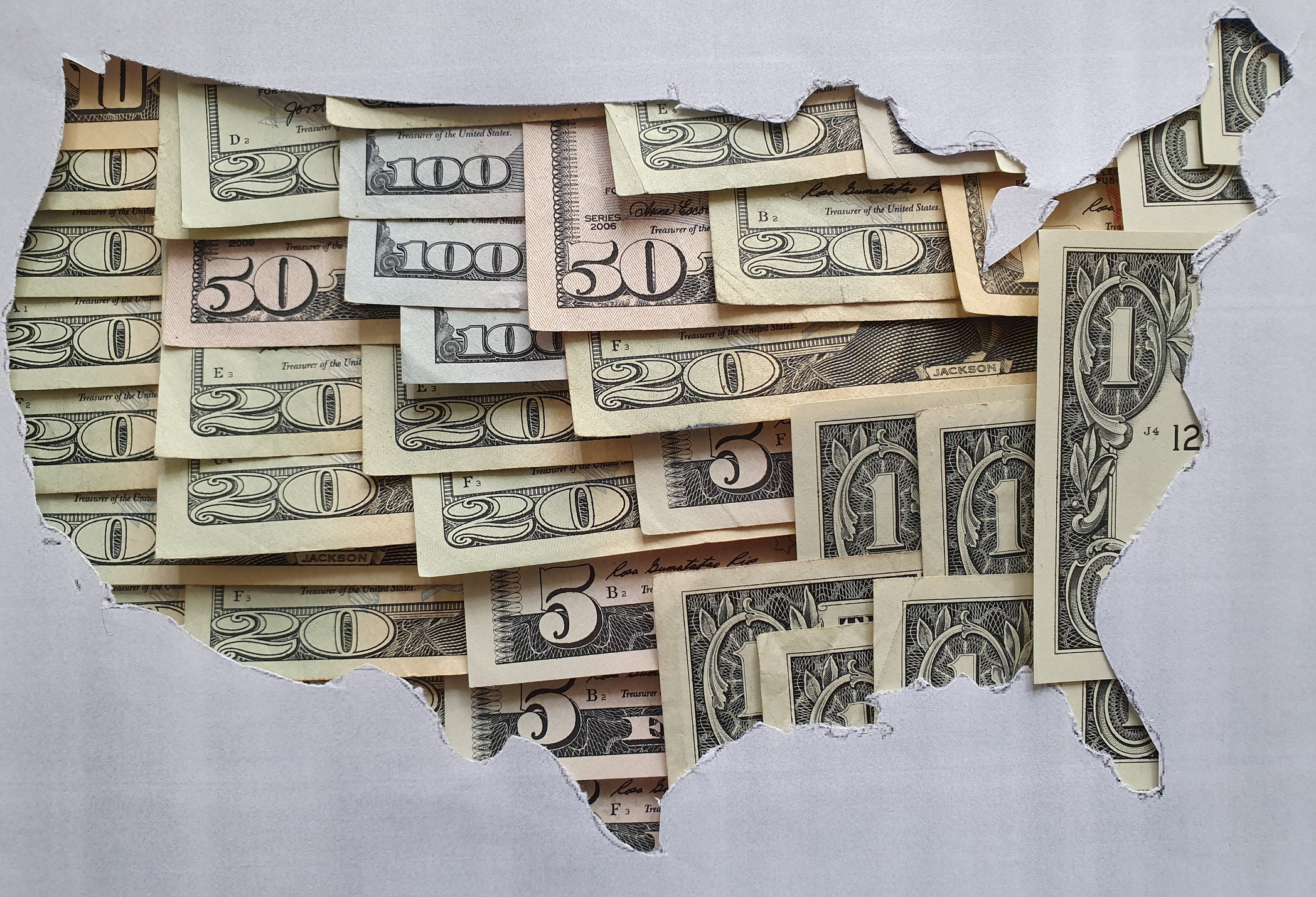California Tax Deadline Extended Due to LA Wildfires: What to Know for 2025
Some Californians have more time to file federal and state tax returns because of devastating wildfires and natural disasters.


In response to the recent wildfires ravaging southern California, the IRS has announced tax relief. This measure, primarily benefiting Los Angeles County residents, pushes back various tax deadlines to later this year.
The IRS relief covers a range of tax obligations, giving affected taxpayers extra time to meet their fiscal responsibilities. The tax agency says it will continue to evaluate the situation and may provide additional disaster relief as recovery efforts progress.
But for now, here’s more of what you need to know.

Sign up for Kiplinger’s Free E-Newsletters
Profit and prosper with the best of expert advice on investing, taxes, retirement, personal finance and more - straight to your e-mail.
Profit and prosper with the best of expert advice - straight to your e-mail.
California fires devastate Los Angeles homeowners and residents
The Los Angeles wildfires ignited on January 7 and rapidly escalated into one of the most devastating disasters. As of January 14, at least twenty-five lives have been lost, with around 150,000 residents evacuated and an additional 88,000 under advisories. The Palisades Fire's largest blaze consumed over 23,000 acres and destroyed around 5,300 structures.
Some early damage estimates range from $250 billion to $275 billion, making this one of the costliest natural disasters in U.S. history.
The fires were fueled by severe weather conditions, including high winds and low humidity, with over 15,000 responders battling the flames.
President Biden has issued a declaration, saying “ "The government will cover 100 percent of the costs of dealing with the disaster for the first 180 days."
Extended IRS tax deadline due to California fires
As a result of the devastation, those impacted by the California wildfires have an extended IRS tax deadline of October 15, 2025. This extension applies to numerous key deadlines, including:
- Individual income tax returns and payments typically due on April 15, 2025.
- 2024 contributions to IRAs and health savings accounts for eligible taxpayers.
- Quarterly estimated income tax payments for 2025, including those normally due on January 15, April 15, June 16, and September 15, 2025.
- Quarterly payroll and excise tax returns, usually due on January 31, April 30, and July 31, 2025.
- Calendar-year partnership and S corporation returns normally due on March 17, 2025.
- Calendar-year corporation and fiduciary returns and payments typically due on April 15, 2025.
- Calendar-year tax-exempt organization returns normally due on May 15, 2025.
The extended filing deadline impacts several other tax obligations, including contributions to IRAs and health savings accounts (HSAs), estimated tax payments, payroll and excise tax returns, partnership and corporation returns, and tax-exempt organization returns.
The IRS disaster relief page on its website provides details on eligible returns, payments, and tax-related actions. Also, see Kiplinger's report: States With IRS Tax Deadline Extensions.
It's important to note that taxpayers with IRS addresses located in the disaster area will automatically receive filing and penalty relief without contacting the agency.
- However, those facing unique circumstances, such as moving to the disaster area after filing their return, may receive penalty notices and should contact the IRS to have penalties waived.
- Also, if you live outside the designated disaster area but require relief because records are in the affected region, you should contact the IRS for assistance.
Additional tax relief
Penalty relief. In addition to deadline extensions, the IRS is waiving certain penalties for late payroll and excise tax deposits.
Specifically, the tax agency will waive penalties for failing to make these deposits, due between January 7, 2025, and January 22, 2025, if the deposits are made by January 22, 2025.
Claiming disaster-related losses on 2024 or 2025 tax returns. Additionally, taxpayers who have suffered uninsured or unreimbursed disaster-related losses can claim them on their current year's tax return (2025) or the prior year's return (2024).
The IRS provides an extended filing window, allowing taxpayers to make that election up to six months after the standard tax return due date. For individual taxpayers, this means the deadline is October 15, 2026.
When claiming losses, including the specific FEMA declaration number (4856-DR) on the tax return is crucial.
The IRS also offers disaster loss workbooks for individuals (Publication 584, Casualty, Disaster, and Theft Loss Workbook) and businesses (Publication 584-B, Business Casualty, Disaster, and Theft Loss Workbook), designed to help taxpayers compile a room-by-room list of their belongings or business equipment.
The agency says on its website: “These publications are a great tool to help individuals and businesses recall and prove the market value of items for insurance and casualty loss claims.”
It’s worth noting that disaster relief payments are generally excluded from gross income, and cover things like:
- Reasonable personal and family expenses
- Living or funeral expenses
- Home repair and rehabilitation costs
- Replacement of home contents
The IRS notes that retirement account holders might be eligible for special disaster distributions that could waive the standard 10% early withdrawal penalty, allow income to be spread over three years, and potentially permit hardship withdrawals
However, each plan or IRA has specific rules and guidance for its participants.
For more information, see Publication 547 (Casualties, Disasters, and Thefts) and Publication 525 (Taxable and Nontaxable Income).
IRS disaster relief
Some local officials and disaster relief organizations praised the IRS action, noting it allows residents to prioritize immediate recovery needs without worrying about tax obligations. And keep in mind that while this relief currently applies to Los Angeles County taxpayers, it could expand to other affected areas.
Affected taxpayers should stay informed about any updates or additional relief measures that may be announced as the situation evolves.
The IRS disaster relief website remains the most up-to-date source for official information regarding tax relief in disaster situations.
Newsom extends California state tax deadline
Gov. Gavin Newsom has also announced a tax deadline extension for California taxpayers affected by the recent wildfires.
Taxpayers now have until October 15, 2025, to file their 2024 California tax returns and make any tax payments that would have been due between January 7, 2025, and October 15, 2025.
Additionally, the state's sales and use tax filing deadline has been postponed from January 31, 2025, to April 30, 2025.
In a release, Newsom stated, “California is taking greater action to continue supporting businesses that have been devastated by the Southern California wildfires. We are strong because of the diversity of our businesses, and we stand by them – providing relief to aid them through this difficult time.”
Claiming disaster losses in California
California’s Franchise Tax Board (FTB) provides information for residents in storm-impacted areas who need to claim disaster losses.
- Taxpayers should include the name of the disaster in blue or black at the top of their state tax return, according to the FTB.
- Those who file electronically will answer a question when prompted by tax software and enter the disaster information accordingly.
As mentioned, to claim disaster losses on your federal tax return, generally, the losses must be related to your home, household items, and vehicles and be caused by a federally declared disaster, according to the IRS.
However, you cannot deduct disaster losses covered by insurance unless you file for timely reimbursement and reduce your claimed losses by the amount you were reimbursed.
If you have disaster losses and are not sure how to claim them on your tax return, it's a good idea to consult a qualified tax professional.
Related Content
Get Kiplinger Today newsletter — free
Profit and prosper with the best of Kiplinger's advice on investing, taxes, retirement, personal finance and much more. Delivered daily. Enter your email in the box and click Sign Me Up.

As the senior tax editor at Kiplinger.com, Kelley R. Taylor simplifies federal and state tax information, news, and developments to help empower readers. Kelley has over two decades of experience advising on and covering education, law, finance, and tax as a corporate attorney and business journalist.
-
 The AI Doctor Coming to Read Your Test Results
The AI Doctor Coming to Read Your Test ResultsThe Kiplinger Letter There’s big opportunity for AI tools that analyze CAT scans, MRIs and other medical images. But there are also big challenges that human clinicians and tech companies will have to overcome.
By John Miley Published
-
 The Best Places for LGBTQ People to Retire Abroad
The Best Places for LGBTQ People to Retire AbroadLGBTQ people can safely retire abroad, but they must know a country’s laws and level of support — going beyond the usual retirement considerations.
By Drew Limsky Published
-
 Free IRS Tax Filing for 30 Million People: Will It Continue Under Trump?
Free IRS Tax Filing for 30 Million People: Will It Continue Under Trump?Tax Filing Direct File was piloted last year in 12 states and has since expanded to 25. But some wonder whether the program will last under the Trump administration.
By Gabriella Cruz-Martínez Last updated
-
 How Caregivers for Adults Can Save on Taxes in 2025
How Caregivers for Adults Can Save on Taxes in 2025Tax Breaks Caring for your parent or spouse can be stressful, but the IRS offers tax breaks for qualifying taxpayers. Here they are.
By Kate Schubel Published
-
 U.S. Treasury to Eliminate Paper Checks: What It Means for Tax Refunds, Social Security
U.S. Treasury to Eliminate Paper Checks: What It Means for Tax Refunds, Social SecurityTreasury President Trump signed an executive order forcing the federal government to phase out paper check disbursements by the fall.
By Gabriella Cruz-Martínez Published
-
 IRS Layoffs Spark Delays, Doubt This Tax Season
IRS Layoffs Spark Delays, Doubt This Tax SeasonTax Season Tax experts say Trump’s downsizing of the IRS is already causing problems.
By Gabriella Cruz-Martínez Last updated
-
 States with the Highest Income Tax Rates for Retirees
States with the Highest Income Tax Rates for RetireesState Tax You may reconsider living and retiring in one of these states due to high taxes.
By Kate Schubel Last updated
-
 AI Tax Scams Target Middle and Older Adults: What to Know
AI Tax Scams Target Middle and Older Adults: What to KnowScams Whether you’re a retiree or Gen Z, scammers can gouge big financial losses with the help of artificial intelligence.
By Kate Schubel Published
-
 Tax-Deductible Home Improvements for Retirement in 2025
Tax-Deductible Home Improvements for Retirement in 2025Retirement Taxes Your aging-in-place plan could benefit from the medical expense tax deduction. But watch out for capital gains and property taxes.
By Kate Schubel Published
-
 Don’t Make These Five Mistakes on Your Tax Return
Don’t Make These Five Mistakes on Your Tax ReturnTax Filing The IRS warns taxpayers to watch out for these common errors as they prepare to file.
By Gabriella Cruz-Martínez Published